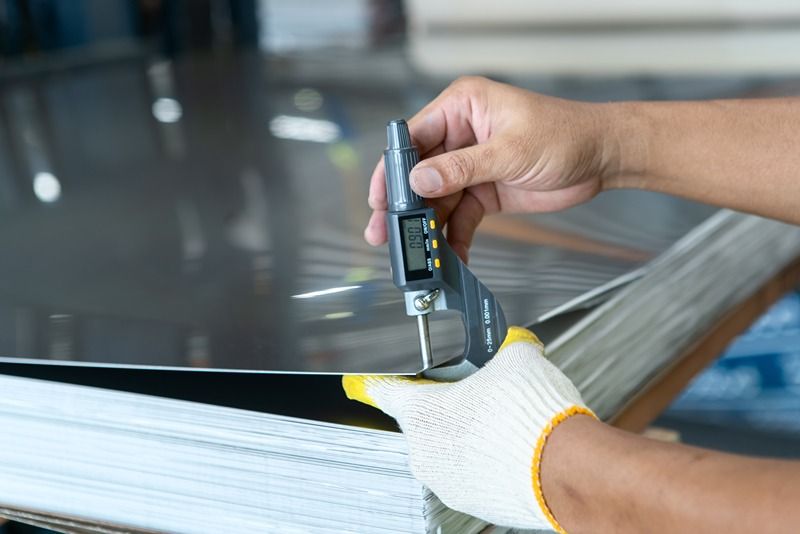Steel is a fundamental material in industrial and machinery manufacturing, offering strength, durability, and adaptability. However, maintaining consistent steel quality during large-scale production is a challenge that directly impacts product performance, safety, and cost efficiency. Ensuring strict quality control measures at every stage of production is essential to achieving uniformity and reliability.
Key factors in maintaining steel quality
The production of steel components for industrial applications involves several processes, from raw material selection to final finishing. Each stage requires precise control to prevent defects and ensure the steel meets required specifications.
The production of steel components for industrial applications involves several processes, from raw material selection to final finishing. Each stage requires precise control to prevent defects and ensure the steel meets required specifications.
- Raw material selection and processing
The quality of steel begins with the selection of raw materials. High-grade iron ore, controlled carbon content, and alloying elements such as chromium, nickel, manganese, Molybdenum must be precisely measured to achieve the desired properties. Impurities like sulphur ,phosphorus or other residual elements must be minimised to prevent brittleness and corrosion. - Consistent melting and refining techniques Steelmaking methods, including blast furnace and electric arc furnace (EAF) production, must adhere to stringent temperature and chemical composition controls. Modern refining techniques, such as vacuum degassing and ladle metallurgy, help eliminate impurities and improve steel consistency.
- Precision in casting and forming Casting processes such as continuous casting and ingot casting play a crucial role in determining steel quality. Ensuring uniform cooling rates prevents internal stresses and structural inconsistencies. Forming techniques, including rolling, forging, and extrusion, must be optimised to maintain the required mechanical properties without inducing defects.
- Heat treatment for enhanced performance Controlled heat treatment processes, including annealing, normalizing, spheroidization, Hardening and tempering, enhance steel’s hardness, ductility, and toughness. Precise temperature management and cooling rates are crucial to achieving the required metallurgical properties.
- Surface treatments and coatings To improve steel’s resistance to corrosion and wear, surface treatments such as galvanisation, powder coating, and chemical passivation must be applied correctly. These treatments enhance longevity and reduce maintenance costs in harsh industrial environments.
Quality control measures in large-scale production
Implementing robust quality control mechanisms ensures that steel components meet industrial standards and regulatory requirements.
- Non-Destructive Testing (NDT): Techniques such as ultrasonic, radiographic, and magnetic particle testing help detect internal defects without damaging the material.
- Dimensional and structural integrity checks: Precision measurements and microscopic analysis ensure components adhere to specified tolerances.
- Automated quality inspection: Advanced AI-driven inspection systems enhance consistency by detecting defects that may be missed by manual inspections.
- Batch tracking and documentation: Maintaining detailed records of each production batch ensures traceability and accountability in case of defects or failures.
Optimising production efficiency without compromising quality
Balancing large-scale production demands with quality assurance requires strategic process optimisation.
Balancing large-scale production demands with quality assurance requires strategic process optimisation.
- Standardised manufacturing protocols: Implementing globally recognised steel production standards such as ISO 9001, IATF 16949, ASTM and other international standards ensures consistency across production batches.
- Automated and digitalised production lines: The use of IoT-enabled systems and real-time monitoring improves precision and minimises human errors.
- Workforce training and skill development: Ensuring that personnel are well-trained in steel processing techniques enhances process efficiency and quality outcomes.
Future trends in steel quality maintenance
The steel industry is continuously evolving, with innovations designed to improve quality and sustainability. Advanced metallurgical techniques, AI-driven process control, and eco-friendly steel production methods are reshaping large-scale manufacturing. Hydrogen-based steelmaking and the integration of nanomaterials offer promising improvements in steel quality and environmental impact.
The steel industry is continuously evolving, with innovations designed to improve quality and sustainability. Advanced metallurgical techniques, AI-driven process control, and eco-friendly steel production methods are reshaping large-scale manufacturing. Hydrogen-based steelmaking and the integration of nanomaterials offer promising improvements in steel quality and environmental impact.
Conclusion
Maintaining steel quality in large-scale industrial and machinery parts production requires stringent control over raw materials, processing techniques, and quality assurance measures. By integrating advanced manufacturing technologies and rigorous testing protocols, industries can achieve consistent, high-quality steel production while optimising efficiency. As technological advancements continue, the future of steel manufacturing will rely on precision, sustainability, and innovation to meet growing industrial demands.




 +91 7208055523
+91 7208055523
 Help & support
Help & support
